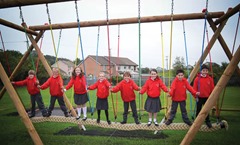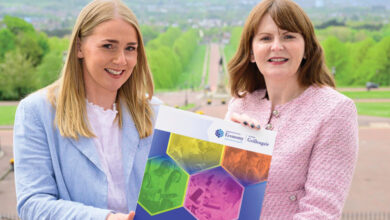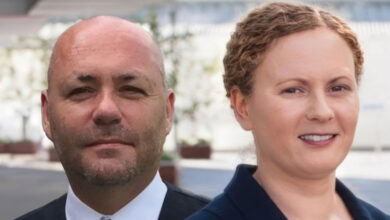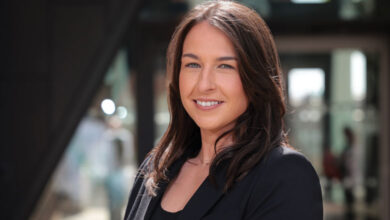Integration is the model for a shared future
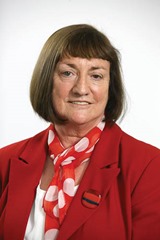 In the light of the Haass talks, Integrated Education Fund Chair Marie Cowan explains how integrated education sets the course that society should follow.
In the light of the Haass talks, Integrated Education Fund Chair Marie Cowan explains how integrated education sets the course that society should follow.
After the Panel of the Parties broke up without agreement last December, and after Richard Haass and Meghan O’Sullivan returned home to the USA, it was tempting to despair of ever seeing real change in Northern Ireland.
There was certainly a pessimistic response from media commentators. It seemed pertinent to ask whether the issues on the table at the talks were the issues really facing Northern Ireland in everyday life. It could also be asked why it has taken so long for politicians to recognise that “issues of what is Irishness, what is Britishness” are so fundamental to creating a united, peaceful place to live.
But then, peace was never going to be quick or easy after more than three decades of violence.
The chair and vice-chair of the Panel say the draft agreement “seeks to build on the successes of the Belfast/Good Friday Agreement and other previous pacts by advancing the unfinished work of Northern Ireland’s peace process”.
The OFMDFM website presents us with the results of the talks, saying “we have come a long way… we have built an impressive, albeit incomplete peace… we have further distance to travel”.
The establishment of the Panel opened up an opportunity to many groups and individuals to contribute the benefit of their experience and analysis. We have an important chance to build on what we have, and as the former principal of an integrated college I would suggest that within our existing integrated schools lie the seeds of a future without sectarianism.
Despite the obvious successes of the peace process, we have still to design the best way to tackle the deep-rooted segregation at the core of this society. Cohesive, cross-community schools would make a sound foundation for addressing this problem.
In fact, it’s hard to see how the problem of sectarianism can be addressed in wider society without addressing the education system. It sits beside our public housing as evidence of how far we have yet to travel towards a shared society. Statutory division exists, through our publicly-funded structures, as an awkward counterpoint to promises of progress towards a shared future.
Identity
The issues of British and Irish identity mentioned by Richard Haass (and later by Gerry Adams) are discussed in integrated classrooms regularly and frequently. Some of these classrooms are sited in interface areas, and many are in communities where children are learning in the context of many other social and economic problems.
The children benefitting from this classroom environment represent a small minority (7 per cent) of the school population in Northern Ireland. However, there is a widely-held aspiration for a shared and united community; politicians declare that they hold the same aspiration and we need them to lead the way to achieving it.
 Our education system could be a driver for this. The OFMDFM strategy ‘Together: Building a United Community’ recognises the segregated nature of Northern Ireland’s education provision and takes the view that “achieving a fully shared education system… is a crucial party of breaking the cycle of… sectarianism”.
Our education system could be a driver for this. The OFMDFM strategy ‘Together: Building a United Community’ recognises the segregated nature of Northern Ireland’s education provision and takes the view that “achieving a fully shared education system… is a crucial party of breaking the cycle of… sectarianism”.
Integrated schools demonstrate daily that it is possible to educate children together without diluting cultural identity. Now as never before, we have an opportunity to learn from that model and create schools for everyone. The current process of area-based planning offers the chance to deliver real change.
However, the process thus far has been rooted in the existing, segregated structure rather than presenting any innovative proposals for a new design for education. Even the steps promoted in the TBUC policy – to create campuses where schools of different identities share some facilities and some activities – still presume that children will be “sorted” into different sectors from an early age.
A single shared and integrated system of schools, which are welcoming to pupils of all backgrounds, which acknowledge and nurture all beliefs whilst unifying delivery of education, would streamline education spending and enable more funds to be dedicated to raising attainment. By reducing duplication of provision, we would free resources to further develop excellence in schools.
This model would also pave the way for truly collaborative learning. The new structure would give children the opportunity to experience and value social diversity directly within their own school and would prepare them for the challenges of adult life in a society trying to realise a shared future.
And this future is possible. Northern Ireland has done it before – political action brought a change in the make-up of the police force and a change to the workplace through fair employment law. So why can’t the same advances be made in terms of an integrated education system?
Perhaps this time it is different because education plans lie in the hands of the Assembly. The problem could be that the very structure of the Executive with its careful checks and balances lends itself to stalemate and leads to atrophy. In the absence of a formal opposition at Stormont, then, it is up to civil society to bring pressure to bear on decision-makers, and to monitor and evaluate the promises, policies and actions of the Executive. As we approach a series of elections in the coming years, it is vital that we remind politicians of what the voters want and deserve.
An independent survey last year showed a strong majority (79 per cent) of parents would support moves to convert their school to an integrated model. The emphasis in the Good Friday Agreement on equality of civil, political and cultural rights should provide protection and reassurance to existing sectors of education and encourage them to move beyond separation. What we need now is an invest-to-save approach and a civic culture which provide communities with a single, well-resourced school, laying the foundations for lives free of sectarianism.
Current moves to increase sharing, like any policy that promotes cross-community contact between children, represent a change for the better. But creating a fully shared and integrated education system would sent out a powerful message that we are creating a truly shared future rather than merely managing the divisions of our past.
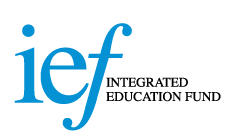 For more information, contact: Integrated Education Fund
For more information, contact: Integrated Education Fund
41-43 University Street
Belfast, BT7 1FY
Tel: 028 9033 0031
E: info@ief.org.uk
W: www.ief.org.uk

